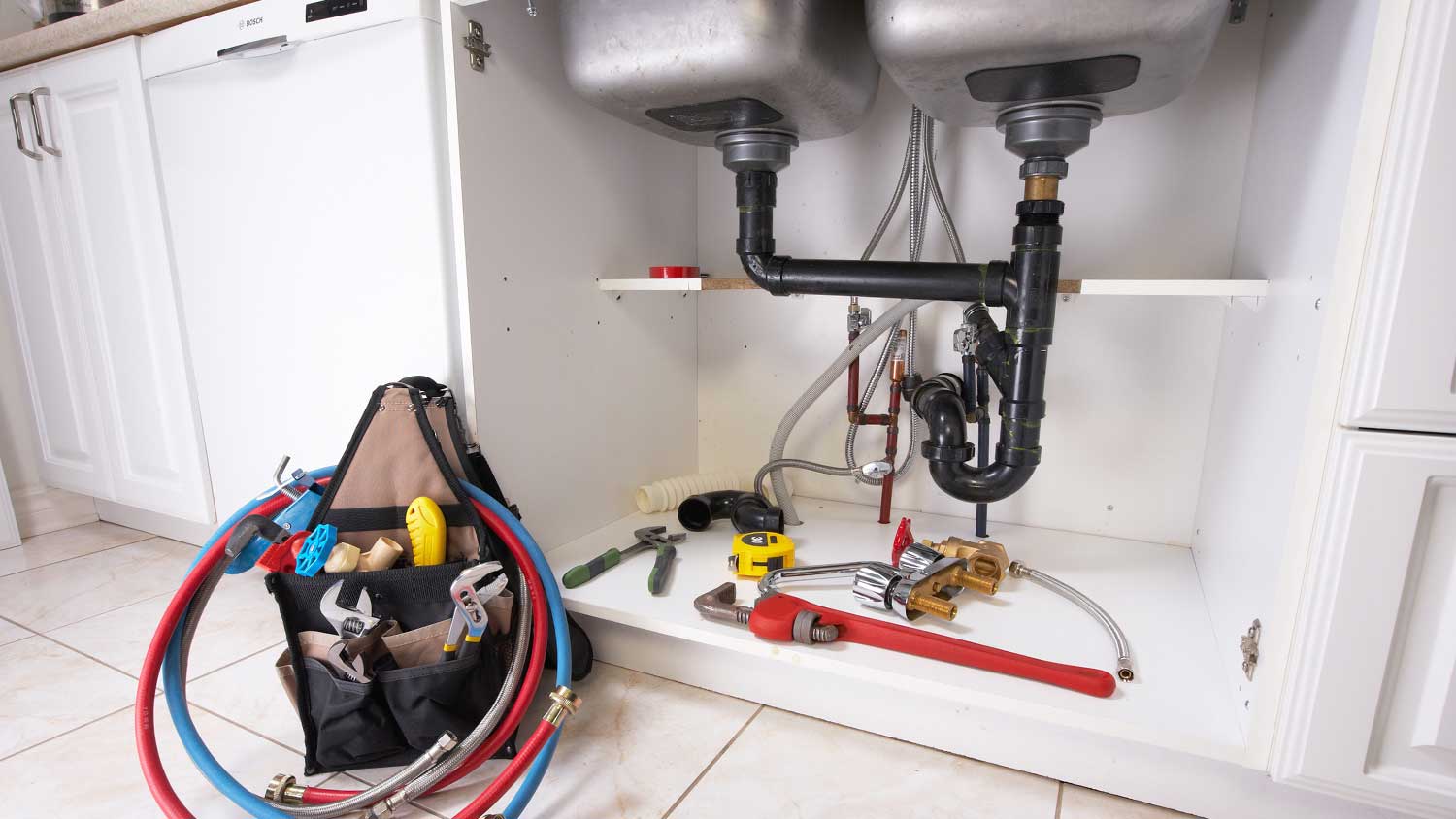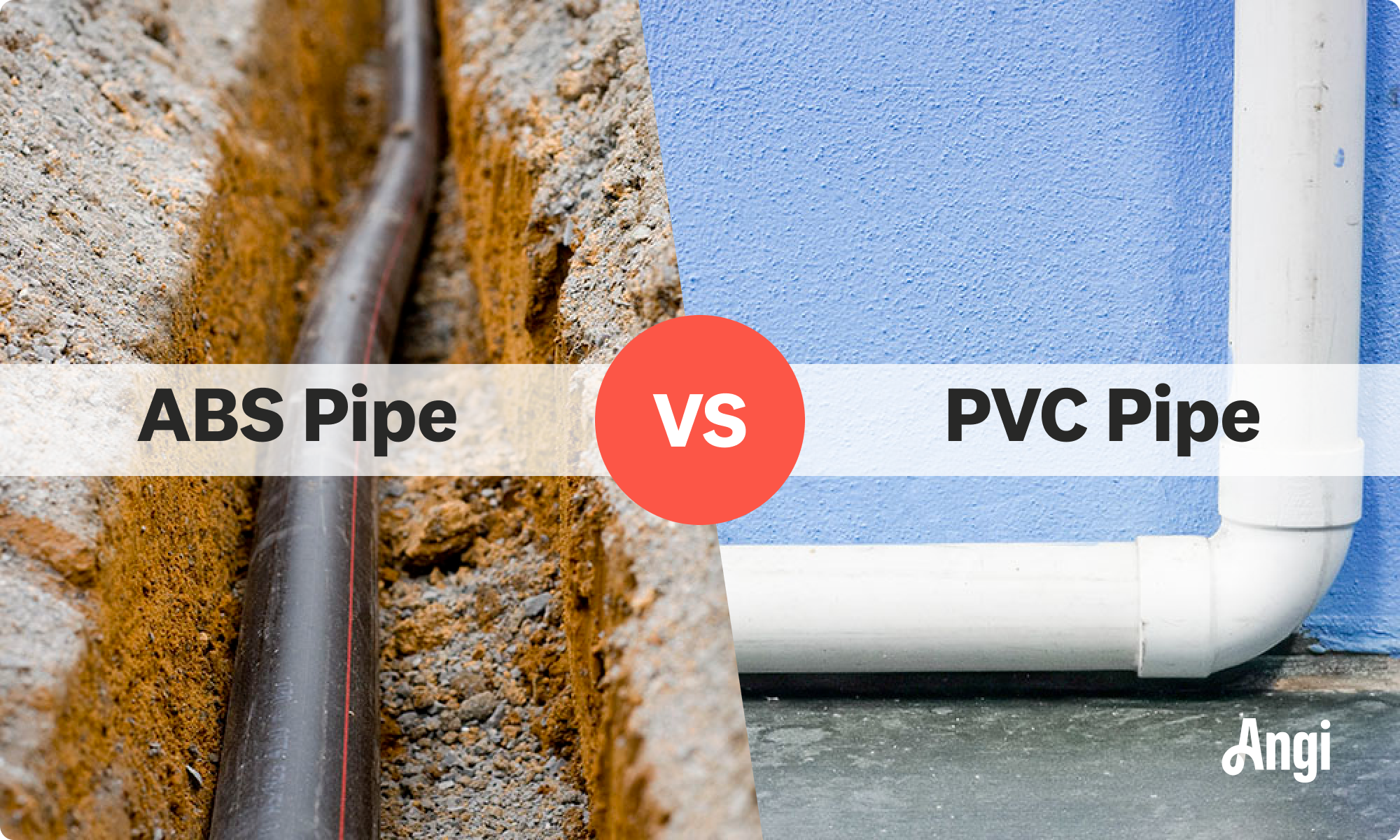
We’ll cover the cost of replacing a shower or bathtub drain, whether you can tackle this repair yourself, and what other projects to consider along the way.
A great plumbing system doesn’t need to be a pipe dream


ABS is a black plastic piping used in drain-waste-vent systems.
ABS and PVC pipes have similar strengths but differ in key ways.
Unlike PVC, ABS can withstand extreme temperatures and impacts.
Due to its BPA content, ABS does not typically carry drinking water.
Its ideal use in homes is for underground drainage lines.
Even with the best plumbing maintenance tips, your home’s pipelines require repair—and when they do, your plumber may mention ABS pipes. Plumbing pros frequently use these black plastic pipes in household sewage and drainage systems, but they’re not a common household name like PVC. Allow us to introduce you to ABS pipes, their uses, and the advantages they bring to the table.

ABS stands for acrylonitrile butadiene styrene. It's a type of black-colored plastic used to manufacture pipes and fittings primarily for drainage, sewage, and ventilation. You'll find ABS pipes in many home drain-waste-vent (DWV) systems. These systems remove wastewater from buildings and carry it to local city sewer lines.
ABS is ideal for these uses thanks to its high ductility compared to PVC, another common plastic piping material. Ductility simply means that ABS pipes can sustain a lot of stress before failing or becoming deformed. It won't split or shatter in extreme heat or below-freezing temperatures, so it can safely carry hot or cold water without you having to worry about how to unfreeze frozen pipes. It also resists chemical and physical damage and will not rust like metal.
When taking on this project, expect questions only a pro can answer. With our network of local pros, you'll get the job done and your questions answered—without the hassle and stress of doing it yourself.

| ABS Pipes | PVC Pipes |
|---|---|
| Ideal for outdoor and underground use | Ideal for indoor plumbing |
| Better hot and cold resistance | Quieter operation |
| Stronger impact resistance | More affordable |
ABS pipe is sometimes compared to white PVC pipe, another common type of plastic piping used in homes for plumbing and drainage. Some similarities between ABS and PVC include the following:
Non-toxic materials suitable to carry potable water
Durable and damage-resistant
Smooth interior bore that prevents lime and debris buildup
50-year service lifespan
Simpler and more affordable to install than metal pipe systems
Good chemical resistance
Not biodegradable
Despite these similarities, ABS and PVC are materially different and are typically not joined together. A few other vital differences also set ABS and PVC apart.
Compared to PVC, ABS pipe has a broader range of operating temperatures. ABS can withstand temperatures anywhere from -40 degrees to 158 degrees Fahrenheit without deforming. PVC tends to get brittle at temperatures below freezing and can only withstand temperatures up to 140 degrees Fahrenheit.
ABS is also considered the stronger of the two materials, with higher impact resistance.
ABS tends to cost about 15% more than PVC and is not as quiet as PVC. Also, ABS pipes make a lot of noise as water flows through them.
However, the primary difference between the two is that ABS pipes contain the chemical Bisphenol A (BPA). BPA is safe in low doses but can contaminate the water running through ABS pipes. For this reason, ABS pipes are not often safe for use in indoor home water supply lines like PVC.
Even outdoors, radiation from direct sunlight can weaken ABS pipes. Plumbers tend to paint outdoor ABS pipes with a UV-resistant coating unless they’re installing them underground, and some municipalities require this step.
| Pros of ABS Pipe | Cons of ABS Pipe |
|---|---|
| Wide range of operating temperatures | Noisy when water flows |
| Performs better in extreme temperatures than PVC | Contains BPA, which can contaminate water |
| HIgh impact resistance | Not used for indoor home water supply lines |
| Durable material | Weakened by sunlight |
Different types of PVC pipes come with several benefits that may make PVC the best option for your home's pipe system. Some of the biggest pros of choosing PVC pipes include the following:
Corrosion-resistant
Material is less expensive
Easier to install because of how easy they are to cut and customize
Water flows more smoothly through the pipes, thanks to their smooth surface
Lightweight and faster to install
Has a lifespan of up to 100 years
Low-impact resistant
Great for custom builds due to how easy it is to shape and mold PVC
Even with all the benefits that come with choosing PVC pipes, this pipe material does come with several disadvantages worth keeping in mind as you make your decision. Cons of choosing PVC pipes include the following:
Susceptible to cold temperatures and may burst, resulting in a high plumbing repair cost
Pipe material has poor heat resistance and is unable to handle temperatures above 140 degrees Fahrenheit
The sun's UV rays can deteriorate PVC piping, which is why it is not installed outdoors unless it is buried underground. Therefore, you'll need to add looking for signs of UV damage to your routine plumbing inspection checklist.
Contains additives that can leach into the water or air over time
| Pros of PVC Pipe | Cons of PVC Pipe |
|---|---|
| Resistant to corrosion | Can burst in freezing temperatures |
| Less costly | Poor heat resistance |
| Ease of installation and customization | Deteriorates in sunlight |
| Water flows smoothly | Contains additives that leach into water or air |
ABS pipe is best for outdoor applications. Plumbers typically install it entirely underground, where it won’t be exposed to direct sunlight. It’s ideal for drainage lines and carrying wastewater away from homes. Its chemical resistance also makes it a common choice in industrial settings.
While ABS is commonly in underground potable water supply lines, copper piping types are the safest bet for carrying drinking water. Your local municipality may have specific guidelines about piping materials for certain projects. If you’re unsure whether ABS pipe is appropriate for your project, contact a faucet repair pro near you, like a plumber, for guidance. The average cost to hire a local plumber is between $180 and $500.
PVC pipes are best for indoor applications. From plumbing, waste, and other draining systems to water irrigation, PVC is a great option for redirecting liquids through pipes at an affordable cost. The material is perfect for DIYers looking for infinite opportunities to create piping systems, thanks to how easy it is to transport, build, and measure pipe sizes.
On the other hand, you should avoid using PVC pipes to transmit compressed air or gases, in outdoor sewage, plumbing, and draining situations where the pipes are exposed to sunlight, and in high heat or cold temperatures. This includes using PVC pipes to transport heated water.
No one type of pipe serves as the be-all and end-all of water supply lines. While galvanized steel and cast-iron pipes are often overlooked in new construction, copper, PVC, and PEX pipes are all popular materials.
Because ABS contains BPA, it’s best to avoid using the material in water supply lines. Likewise, PVC is ideal for cold taps, but you should not use it for hot water supply lines, as the material will melt and warp. Instead, choose copper or PEX pipe.
From average costs to expert advice, get all the answers you need to get your job done.

We’ll cover the cost of replacing a shower or bathtub drain, whether you can tackle this repair yourself, and what other projects to consider along the way.

The cost to install a water line for refrigerators typically falls between $75 and $130 depending on the materials, labor, and equipment. Read on to learn more.

This guide to toilet installation cost covers what you can expect to pay when adding a new toilet to an existing or new bathroom.

Touchless faucets offer benefits like saving water, avoiding germs, and simplifying cleanup. Learn the top benefits of hands-free faucets and decide whether to switch.

If you need trenchless sewer repairs, you’ve no doubt asked yourself, “What is pipe bursting?” This guide answers that question and so much more.

Read these 9 tips for inspiration on how to reduce your toilet’s water usage